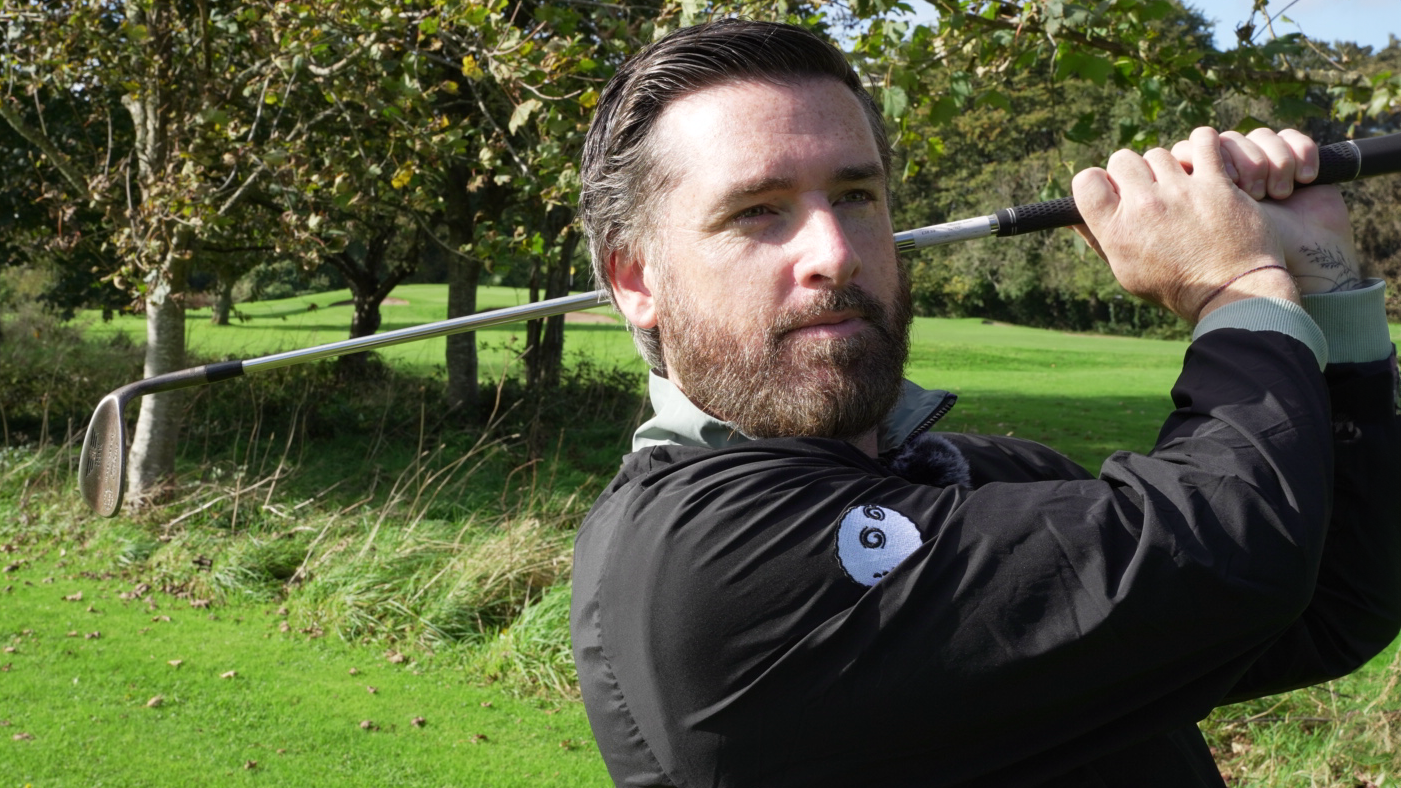£39 Vs £169 Wedge Test... Surprising Results!
In his latest Retro Review, Joe Ferguson sees if the original Vokey wedge picked up for just £39 can compete with the modern equivalent four times the price


In this latest Retro Review, I heading back to the origins of a short-game dynasty. Some marriages just make sense in golf, Faldo and Sunesson, Phil and Bones, and one that has stood the test of time above all others is Bob Vokey and Titleist. I picked up one of the earliest available Vokey models, the 200 raw series, for the bargain price of £38.99 from golfclubs4cash and put it up against its modern-day equivalent in the Vokey SM10, which has an RRP of £169. With the best part of a quarter of a century between them, I was expecting some significant performance differences.
WATCH: Joe Ferguson compares the original Vokey 200 series against the recent SM10 in a variety of situations
What was the tech?
The Vokey 200 series wedges were cast from soft 8620 carbon steel for the ultimate in feel. They featured U grooves for optimal spin and a distinctive hosel knurling as a nod to a bygone era offering a very classic appearance. The investment casting process that Titleist and Vokey used was designed to ensure a precise profile and sole shapes. This particular model was left with the raw untreated finish, allowing the head to rust over time which was generally the tour preferred finish.

How did it perform?
With nearly 25 years between the manufacturing of these two wedges, I was expecting to see a huge gulf in performance, and to quantify that performance, I headed out the the practice ground and chipping green with my FullSwing KIT launch monitor to start gathering some data. For context and equality, both of the wedges I tested had 56 degrees of loft and 14 degrees of bounce, and both fitted with S Flex shafts.
Truth be told, I wasn’t sure what to expect from a spin point of view, as while you would imagine with 20+ years of usage the spin output may have significantly diminished, the now banned U grooves left me wondering whether it may have retained more spin than expected. In truth, there was a difference in spin, with the new SM10 producing a little more, but with only 300 rpm between them on full shots, I was somewhat surprised. The lower-spinning 200 series also produced a higher launch angle at 38° versus the 35.5° from the SM10 resulting in a slightly higher peak height and a steeper descent angle.

When I headed to the chipping green, I basically saw a shrunken-down version of what I had witnessed in the full shots, with the ball seeming to stay on the face of the SM10 a little longer and producing lower, grippier pitch shots. The 200 series didn’t lack stopping power either but seemed to produce it in a different way with a higher flight allowing it to settle quickly more through trajectory than spin. Both wedges felt excellent off the face with a real depth of strike apparent and exceptional feedback across the faces.

Conclusion
The key thing I look for when testing older wedges is spin decay, how much grip have the grooves lost over time, and to be honest only being 300 rpm behind a brand new 2024 SM10 is an impressive feat from a wedge nearly celebrating its 25th birthday, albeit with grooves that are now likely non conforming. Aside from that performance parameter, I could certainly make a case that I enjoyed the older wedge more with its beautifully rounded leading edge and simple aesthetic in the bag and with the significantly different price tag, if you aren’t looking to compete in professional or elite amateur events that may enforce the groove change rule, then there is some excellent performance up for grabs for a fraction of 2024 prices.
Get the Golf Monthly Newsletter
Subscribe to the Golf Monthly newsletter to stay up to date with all the latest tour news, equipment news, reviews, head-to-heads and buyer’s guides from our team of experienced experts.

Joe has worked in the golf industry for nearly 20 years in a variety of roles. After a successful amateur career being involved in England squads at every age group, Joe completed his PGA degree qualification in 2014 as one of the top ten graduates in his training year and subsequently went on to become Head PGA Professional at Ryder Cup venue The Celtic Manor Resort. Equipment has always been a huge passion of Joe’s, and during his time at Celtic Manor, he headed up the National Fitting Centres for both Titleist and Taylormade. He’s excited to bring his knowledge of hardware to Golf Monthly in the form of equipment reviews and buying advice.
Joe lives in North Devon and still plays sporadically on the PGA West region circuit. His best round in recent years came earlier in 2023 where he managed a 9 under par 63 at Trevose GC in a Devon & Cornwall PGA Tournament.
Joe's current What's In The Bag?
Driver: Switch between TaylorMade Qi35 and Callaway Elyte TD - both with Fujikura Ventus Black 6-X
Fairway wood 1: TaylorMade BRNR Copper Mini Driver - Fujikura Ventus Black 7-X
Fairway wood 2: Callaway Apex UW 17˚- Fujikura Ventus Black 9-X
Irons: TaylorMade P7CB 3-PW with Dynamic Gold Tour Issue X100 shafts
Wedges: Callaway Opus 50, 54, and 60 degrees - Project X LS 6.0 shafts
Putter: LAB Golf Oz.1 (zero shaft lean)
Ball: TaylorMade 2024 TP5x
Grips: Golf Pride Tour Velvet 60R
Bag: Vessel Player IV Pro DXR Stand
-
 Nick Dunlap Cards Worst Masters Round In A Decade At Augusta National
Nick Dunlap Cards Worst Masters Round In A Decade At Augusta NationalThe two-time PGA Tour winner had a day to forget at Augusta National, with his 18-over-par 90 the worst round at The Masters since 2015
By Matt Cradock Published
-
 MLB Hall Of Famer Ken Griffey Jr Is A Credentialed Photographer At The 2025 Masters
MLB Hall Of Famer Ken Griffey Jr Is A Credentialed Photographer At The 2025 MastersThe Masters attracts the biggest stars and, at the 89th edition, Baseball Hall Of Famer, Ken Griffey Jr, was revealed to be a credentialed photographer
By Matt Cradock Published
-
 I Built Tiger Woods’ 2019 Masters Winning Bag From The Second-Hand Market!
I Built Tiger Woods’ 2019 Masters Winning Bag From The Second-Hand Market!PGA Professional Joe Ferguson has been taking a deep dive into Tiger’s bag for arguably the greatest victory of his career…
By Joe Ferguson Published
-
 How Titleist 'Used Every Tool In The Toolbox' To Enhance The New Pro V1 And Pro V1x Golf Balls
How Titleist 'Used Every Tool In The Toolbox' To Enhance The New Pro V1 And Pro V1x Golf BallsAfter months of testing and tour validation the new Titleist Pro V1 and Pro V1x golf balls are set to launch, but what's new? We explain all
By Sam De'Ath Published
-
 How The New Cobra DS-ADAPT Range Looks To Have Changed Driver Fitting Forever
How The New Cobra DS-ADAPT Range Looks To Have Changed Driver Fitting ForeverWith a revolutionary hosel design and refined aerodynamics, the Cobra DS-ADAPT may just become the standout driver in 2025
By Sam De'Ath Published
-
 7 Useful Golf Rangefinder Features You Never Knew About
7 Useful Golf Rangefinder Features You Never Knew AboutThink you know everything a rangefinder can do? Think again. We've got seven of the best features currently available on the best modern rangefinders
By Dan Parker Published
-
 Do Putting Mats Help Improve Your Putting?
Do Putting Mats Help Improve Your Putting?Former professional golfer Sam De’Ath sheds light on whether or not a home putting mat can help improve your performance on the greens
By Sam De'Ath Published
-
 I Tried Bryson DeChambeau’s Actual 7-iron And It Blew My Mind!
I Tried Bryson DeChambeau’s Actual 7-iron And It Blew My Mind!Irons expert Joe Ferguson got his hands on an Avoda 7-iron that was built specifically for the US Open Champion, and here’s what he learned…
By Joe Ferguson Published
-
 3 Reasons You Should Be Thinking Of Yonex For Your Next Golf Club Upgrade…
3 Reasons You Should Be Thinking Of Yonex For Your Next Golf Club Upgrade…Yonex Golf has some genuine heritage within the game, and with some exciting new product lines, they should be a serious consideration for your next purchase…
By Joe Ferguson Published
-
 10 Clever Golf Gear Hacks You Should Try This Winter
10 Clever Golf Gear Hacks You Should Try This WinterThese subtle changes to your equipment could well transform your scoring ability in the winter, so why not give some of them a try?
By Joel Tadman Published
